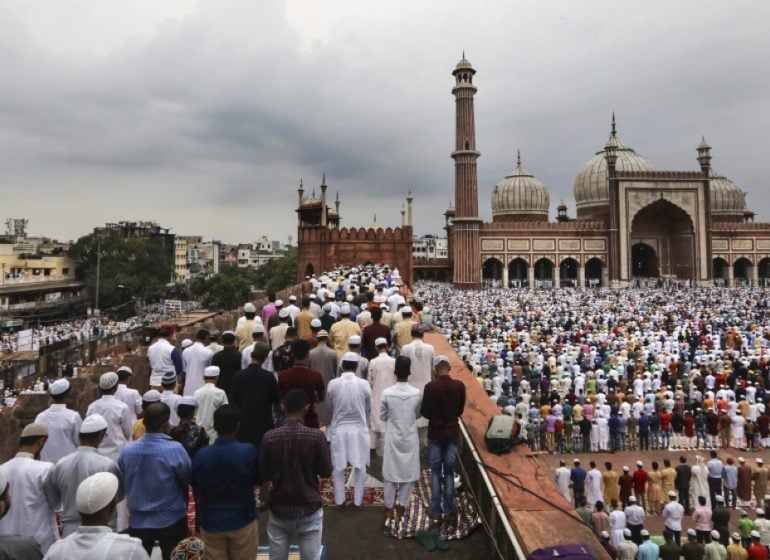It is that time of the year that Muslims across the world come together in celebration and reflection. Eid al-Adha is here.
Eid al-Adha is the festival Muslims celebrate by slaughtering an animal, which is either a goat, sheep, cow, or camel to commemorate Prophet Ibrahim’s devotion to Allah and his readiness to sacrifice his son, Ismail.
However, amidst the excitement and fun, it’s also important to remember the spiritual significance of this occasion as a Muslim.
In view of this, here are some acts recommended by Prophet Muhammad’s traditions and teaching (Sunnah) for Muslims to partake in on Eid al-Adha.
- Performing ghusl (bath) before going for eid-al-adha prayer
One of the important acts of eid-al-adha is taking a ghusl (bath) before going to the mosque for Eid prayer.
It was narrated that the prophet does this always on Eid Day.
“The Messenger of Allah (SAW) used to have a bath on the day of Fitri and the day of adha.”
So having ghusl before Eid equates to following the Sunnah which also has its reward.
- Going for eid-al-adha prayer
Salah al-eid is one of the main activities of the day so everyone is advised to go for eid-al-adha prayer early.
The Eid prayer shouldn’t be skipped. According to the words of Prophet Muhammad, the slaughtering of ram, cows, sheep, and camel then begins after the prayer.
“The first thing to be done on this day (first day of `Id ul Adha) is to pray; and after returning from the prayer we slaughter our sacrifices (in the name of Allah) and whoever does so, acted according to our Sunna (traditions).”
Prophet Muhammad also encouraged everyone to go, including men, women, children, and even the women who are menstruating are encouraged to go and listen to the prayers and khutbah (preaching).
- Performing the qurban (sacrifice)
After praying on Eid, it’s also a sunnah to slaughter an animal – a goat, sheep, cow or camel – to reflect Prophet Ibrahim’s willingness to sacrifice his son, Ismail, for the sake of Allah.
It was narrated that Prophet Muhammad made it compulsory for all Muslims who can afford it.
“Whoever can afford it, but does not offer a sacrifice, let him not come near our prayer place.”
However, don’t forget to share it among your family, friends, neighbours and the needy.
- Adorning yourself on eid-al-adha
It is expected that Muslims look their best on eid-al-adha Day.
Perform ghusl and also wear your best cloth when going for an eid-al-adha prayer.
It was reported that “The Prophet (peace and blessings be upon him) had a Jubbah (cloak) that he would wear on `Eid and on Fridays.”
So wear your best cloth and look good for eid-al-adha.
- Changing route when returning from eid-al-adha prayer
After praying on eid-al-adha day, it recommended going back home through a route different from the one you came.
The reason for this act is not really known but because it’s the way of the prophet, it is recommended.
Jabir bin Abdullah narrated that “on the Day of `Id the Prophet (ﷺ) used to return (after offering the`Id prayer) through a way different from that by which he went.
- Greeting and congratulating one another
This is another recommended etiquette for eid-al-adha.
Muslims are expected to greet and congratulate each other on Eid Day when they meet, using the permissible greeting.
The greeting includes “Taqabbala Allah minna wa minkum” which means “May Allah accept (good deeds” and Eid Mubarak “Happy Eid”.
Jubayr ibn Nufayr narrated that “when the companions of the Prophet (peace and blessings of Allah be upon him) met one another on the day of Eid, they would say to one another, “May Allah accept (good deeds) from us and you.”
Copyright 2024 TheCable. All rights reserved. This material, and other digital content on this website, may not be reproduced, published, broadcast, rewritten or redistributed in whole or in part without prior express written permission from TheCable.
Follow us on twitter @Thecablestyle

